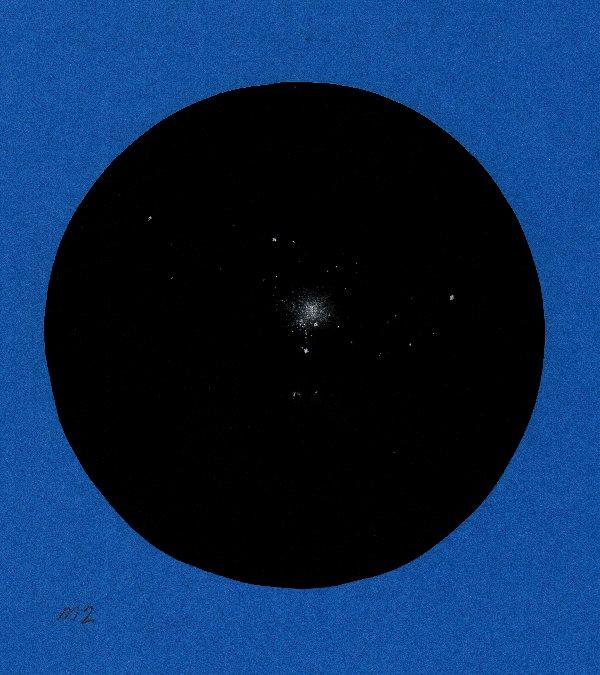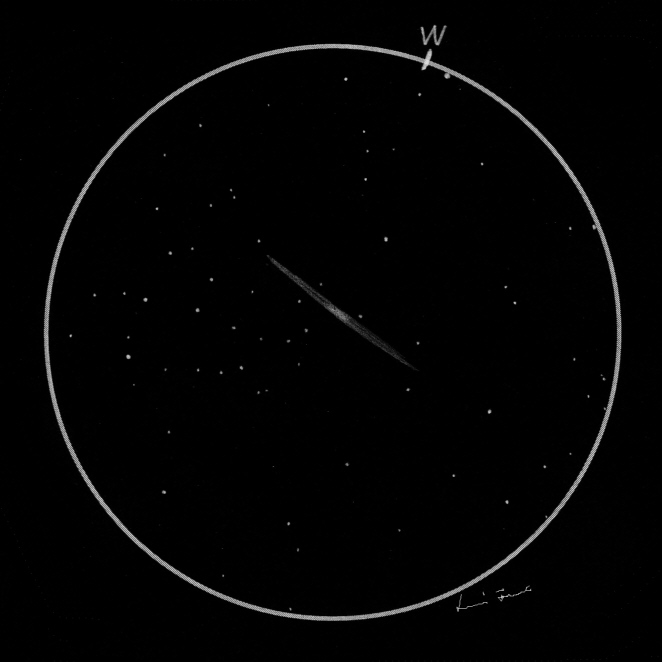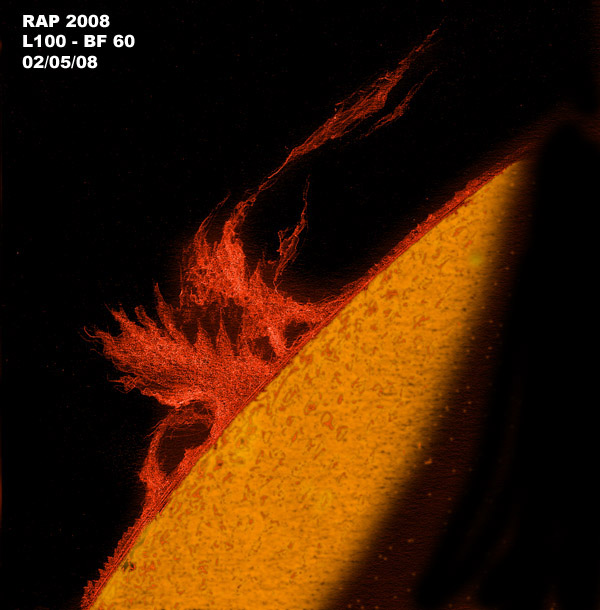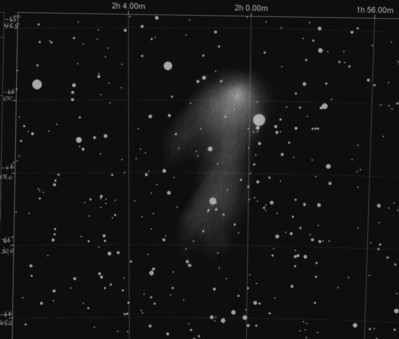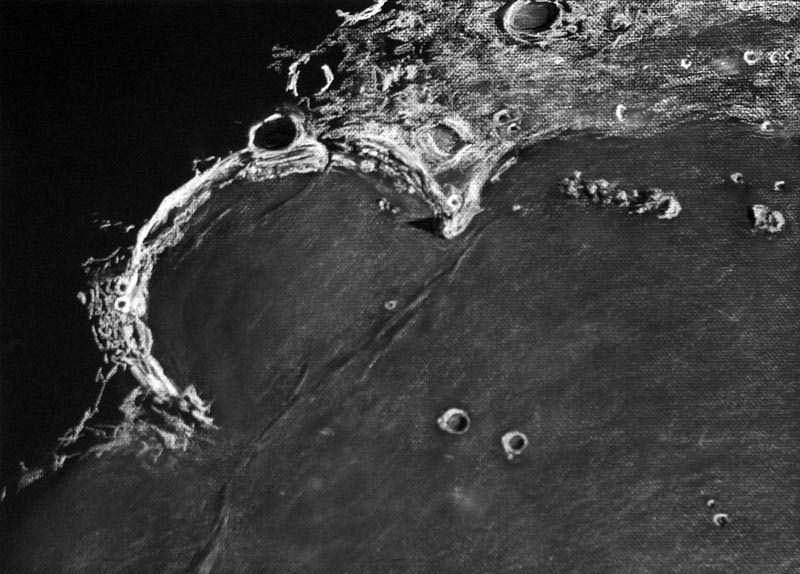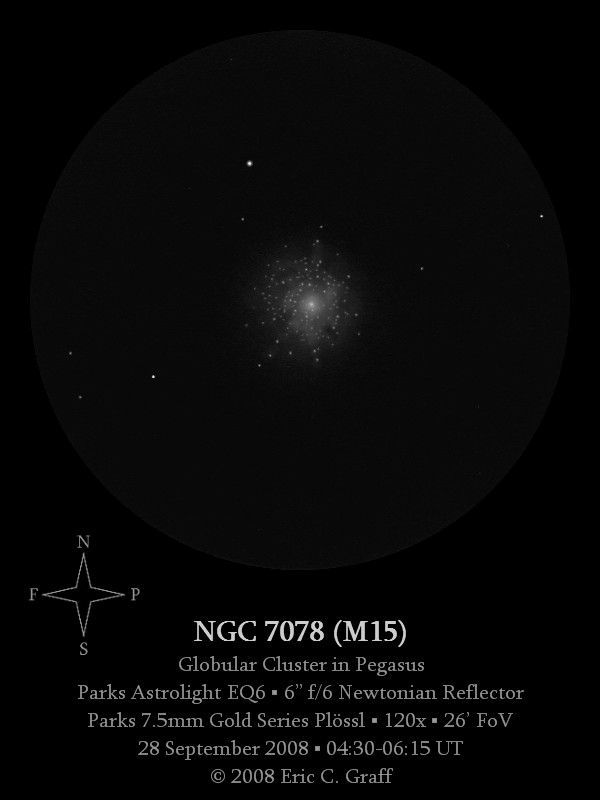
M15
Sketch and Details by Eric Graff
Object Name: NGC 7078 (M15)
Object Type: Globular Cluster
Constellation: Pegasus
Right Ascension (2000.0): 21h 29m 58.3s
Declination (2000.0): +12° 10′ 01″
Magnitude: 6.3
Diameter: 18.0′
Concentration Class: 4
Distance: 30,600 light years
Discovery: Jean-Dominique Maraldi II, September 1746
NGC Description: ! Cl, vB, vL, iR, vsmbM, rrr, st vS
Date/Time: 28 September 2008 • 04:30-06:15 UT
Location: Oakzanita Springs, San Diego Co., California, USA
Telescope: Parks Astrolight EQ6 • 6″ f/6 Newtonian Reflector
Eyepiece: Parks 7.5mm Gold Series Plössl
Magnification: 120x
Field of View: 26′
Filter: None
Conditions: Clear, calm, 62°F
Seeing: Pickering 6
Transparency: NELM 6.4, TLM 14.3
It has been quite some time since I’ve sketched a really nice globular cluster, so after spending a bit of time chasing down a few dubious targets in northeastern Cygnus, I settled on a prolonged observation of Messier 15. The northernmost of the autumn sky’s three “Great Globulars” (the other two being M2 in Aquarius and M30 in Capricornus), M15 is easy enough to locate 4° northwest of colorful Epsilon Pegasi, tucked into a narrow triangle of 6th, 7th and 8th magnitude stars; these are HD 204862, HD 204571 and HD 204712, respectively.
Technically visible to the naked eye (I’ve never seen it thus, however), it is easily visible in binoculars as a slightly fuzzy star. At low telescopic magnification (30x), I see M15 as an unresolved nebulous patch with a blazing center and an irregular, spidery outline in a pleasing starfield. It is an interesting exercise to defocus the low-power field and compare the 6.1 magnitude glow of HD 204862 with the 6.3 magnitude glow of M15. Which one looks brighter to you?
At medium magnification (60x), I am able to resolve perhaps a dozen stars around the perimeter of the cluster. The core remains very bright and highly condensed. The entire face of the cluster is granular with stars just beyond the point of true resolution. Wispy streamers of faint starlight that drift in and out of visibility enhance the irregular outline of M15. At high magnification (120x) scores of distinct stars dance across the face of the cluster, spilling beyond its edges in curved arcs and narrow streams. Overall, the cluster is elongated slightly NNE-SSW with a bright central core. Countless minute suns seethe like a heap of restless diamond dust and several dark lanes crisscross the cluster, particularly toward the NE where several rifts run nearly parallel to one another; a peculiar dark patch SW of the nucleus is also noteworthy. Eighth magnitude HD 204712, 10th magnitude TYC 1127-128-1, and a handful of anonymous 13th magnitude stars share the high power field of view with M15.
This sketch was made on 67 lb. cover stock in a 3-inch circle with #2 mechanical pencil (0.5mm lead), blending stump and black ink (for the two bright field stars).

